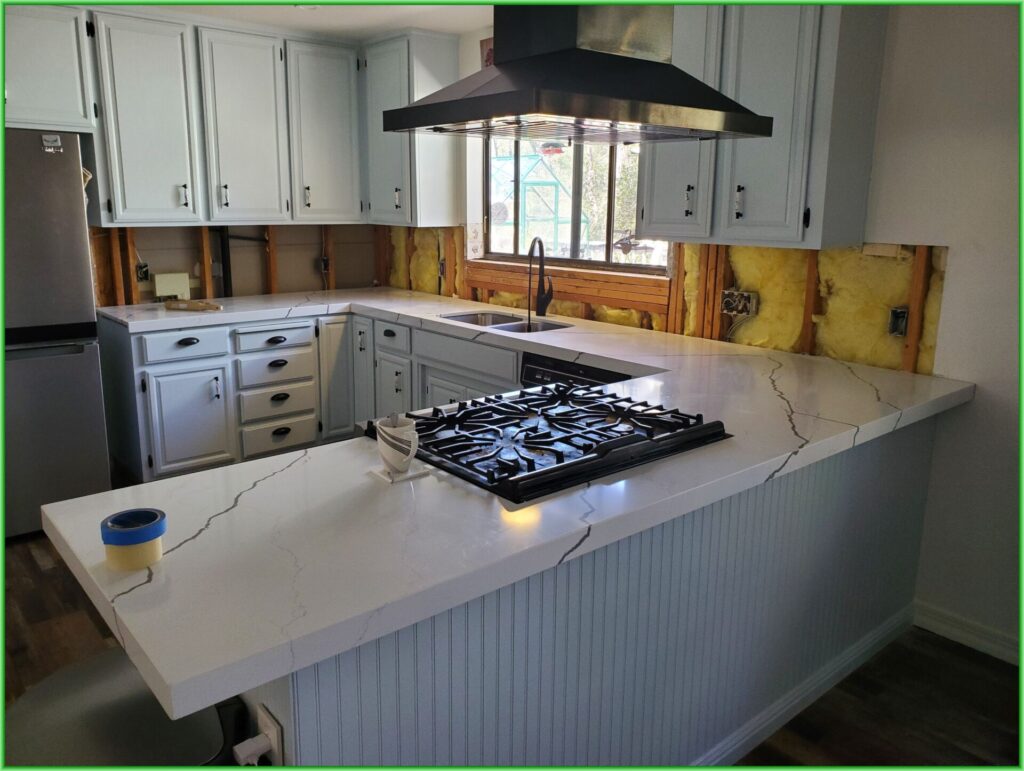CalGreen for Retroactive Permits
CalGreen for Retroactive Permits
So, you have decided you can no longer live with the fact that you remodeled your house without benefit of a city building permit. What do you do now?
You have a few choices. You can continue to live with the guilt of breaking the law, hoping the city never finds out what you did. Or, you can apply for a retroactive permit.
Perhaps the first thing you need to understand, is that there is no punishment involved if you are the one to initiate the process. The priority of your local building department is to ensure your project was built safely. They want you to get it permitted to ensure that the structure will be safe now, and for future tenants or homeowners.
How Does Unpermitted Work Occur?
Unpermitted work originates from a number of scenarios.
It can occur as a result of a homeowner not understanding that the work they were performing required a building permit. This is quite common. It is important to understand that individual building departments will have their own requirements for what work requires a permit. This information is typically listed on their website, or you can simply call and ask them.
Sometimes a building owner, or homeowner, may believe they are saving money by avoiding the permit process. The reality is that most permits and inspections are not costly compared to the cost of the work. It’s rarely in your best interest to try and bypass the building permit process. Ultimately, this can prevent the sale of a home or building if this unpermitted work is discovered during a real estate inspection. In that case, the cost in delays to sell the business or home in a timely manner can cost far more than the original permit process.
In some cases a building or home is purchased with the understanding that part of the building is not permitted. This usually results in a discount to the purchaser. The purchaser understands that he will be obligated to bring the building up to code within a reasonable period of time.
In the most extreme case, the person performing the work may know that it does not meet the building code requirements. This may be to save money, or for some personal reason.
What Work Requires a Retroactive Permit?
Some of the work that typically requires a permit includes:
- Extensive kitchen and bathroom remodels.
- The removal or addition of walls.
- Changing the purpose of a room, such as a basement or a garage conversion.
- Changes to the plumbing layout of the building.
- Replacing the roofing material (shingle, clay tile, asphalt, etc.)
- Demolishing part of the building.
- Replacement of a furnace or air conditioning unit.
- Replacement of a hot water heater.
- Exterior window and door replacement.
- Adding solar photovoltaics’ or a solar thermal system.
- New Swimming pool.
How Long Will the Permit Process Take?
You will no doubt hear horror stories of how long building permits are taking in California. However, permit processing times for minor interior projects is usually much quicker than for new construction.
You will likely need to hire a drafting service, or architect, to put together a set of plans showing the work that is to be retroactively permitted. It is advisable to hire someone with experience in your jurisdiction as they will know what issues the local inspectors will focus on.
New construction must be reviewed by many departments within the building department. Typically, these are passed from one department to the next with each taking time to review their respective issues. Then each department will write corrective actions for your permit plans that will then be sent back to your architect. The architect will make the corrections and resubmit them to the building department which starts the review process over again. Depending on the experience of your architect, this cycle can end up being repeated three or four times.
If your unpermitted structure is a detached building, or involved structural modifications, then the permit process is going to take some time. However, as this is an existing condition, there is typically not the same time pressure to get it done in a fixed amount of time. Permit reviews involving structural elements are likely to take three to six months.
Minor projects will typically only go thru one or two departments. Also, many building departments have an expedited process for minor repairs or renovations. These retroactive permits may sometimes be done over the counter or within a week or two.

What are the CalGreen Code Retroactive Permit Issues?
Retroactive permit issues related to the CalGreen Code are usually straightforward. In most cases you will need to submit a properly filled out CalGreen checklist. The intent of the checklist will be to identify which items will be field-verified as part of the retroactive permit process. Of course, it will be impossible to verify many of the checklist items such as VOC limits, moisture content of materials, and similar items.
The main concern for the building department will be the flow rates of the plumbing fixtures. Toilets, kitchen faucets, shower heads, and bathroom faucets must all meet current codes. If plumbing fixtures are a part of your retro-permit, keep in mind that toilets are cheap and easy to install. Faucet flow rates can be reduced by the addition of flow restrictors. Shower heads too, are cheap. Bringing these relatively inexpensive items up to code can demonstrate to an inspector that you are making a good faith effort to comply with the code.
No matter how hard you try to comply with the code there will likely be some items you cannot prove after the fact. The inspector will be required to make a judgement call on these issues.
It is wise to remember that, at the end of the day, the inspector standing in your living room has the final say in approving your project. Their opinion on your good faith effort will factor into their approval. My recommendation is to be honest and open with them. Do what you can to respond to all their concerns. In the end a good faith effort, and honesty, will go a long way in getting a final approval on your project.
Some jurisdictions have a clear process for retroactive permits. Sonoma County, in northern California, publishes a specific Policy and Procedure. The document is titled Concealed Construction Verification Guidelines. The intent is to establish a reasonable compliance method to verify concealed construction.
The process starts with a complete set of permit plans for the retroactive permit work documenting the existing conditions and where and how the project will meet the current code requirements. Once the plans are reviewed and approved, the concealed construction verification can occur.
If selective inspection or independent verification indicates code compliance, then the remaining concealed construction is assumed to be correct. You can click the image below to see the full text of the Sonoma County Concealed Construction Verification Guidelines.
At CalGreen Energy Services we are specialists in the CalGreen Code. CalGreen is our only business. If you have a CalGreen retroactive permit question please feel free to give us a call. We are happy to share our knowledge.
Call us today and let us show you how we can help with your project.
Email: gary@calgreenenergyservices.com
Phone: 707-328-5299


Gary Welch has over 35 years experience in the field of sustainable building design. He is the CEO of CalGreen Energy Services. Gary is an ICC Certified CalGreen Special Inspector and Plans Examiner.





